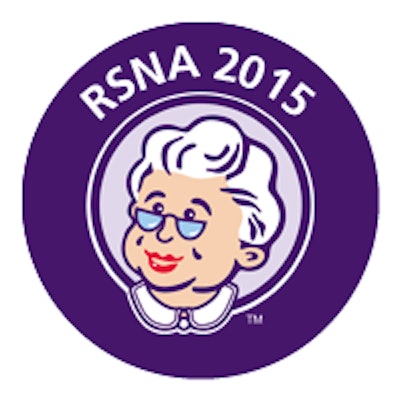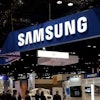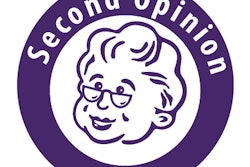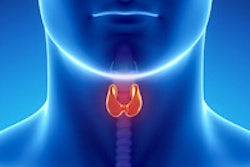
CHICAGO - Screening ultrasound in asymptomatic healthy people can be useful for detecting early-stage thyroid cancer, and in South Korea at least, it can be done at a relatively low societal cost, according to research presented on Tuesday at RSNA 2015.
In a study of more than 1,800 patients, screening thyroid ultrasound identified cancer in nearly 1.6% of the subjects, said presenter Dr. Jeongin Yoo of Chonbuk National University in Jeonju, South Korea. While most of the cases were micropapillary carcinomas, some did present at an advanced stage. The average cost to find cancer was just under $7,000 per patient.
"Screening thyroid ultrasound in the clinical setting in Korea can detect thyroid cancer early, with high diagnostic performance and a low social cost for detecting each cancer patient," Yoo said.
Statistics in both South Korea and the U.S. show a true increase in the incidence of thyroid cancer, even though death rates have not increased. Therefore, the higher incidence of thyroid cancer may be due to a true increase in cases and/or the use of intensive diagnostic activities such as high-resolution ultrasound and fine-needle aspiration (FNA) biopsy, she said.
Overdiagnosis?
Because the use of screening thyroid ultrasound is controversial due to the possibility of overdiagnosis and overtreatment, the researchers sought to evaluate the diagnostic performance and cost-effectiveness of screening ultrasound in a healthy population in Korea and to analyze the ultrasound features of screening-detected thyroid cancer. From March to August 2012, screening thyroid ultrasound was performed at their screening center on 1,923 asymptomatic and healthy participants, who were then followed-up for a maximum of two years. Of the 1,923 subjects, 60 were lost to follow-up and 18 were excluded due to a previous thyroid operation.
One of two board-certified radiologists performed high-resolution ultrasound studies on either a Logic 7 (GE Healthcare), Logic 9 (GE), or iU22 (Philips Healthcare) ultrasound system with a 5- to 12-MHz linear transducer. The images were retrospectively reviewed by four other board-certified radiologists and classified by the ultrasound assessment criteria recommended by the Korean Society of Thyroid Radiology. Patients were managed according to the society's consensus statement.
The researchers found that 973 subjects (52.7%) had benign disease, as determined in 63 cases by FNA biopsy and by no change in two years of follow-up for 910 subjects. There were 29 malignancies (1.6%), which were proved by FNA biopsy in 27 cases and by surgery in two participants. Twenty-eight subjects had papillary thyroid cancer, while one had a follicular neoplasm.
The cancer patients had a mean age of 50.9 years, and women made up 69% of the cancer cases. Cancer was detected at a rate of 15.7 per 1,000 ultrasound exams. The malignancy rate (the number of cancers divided by the 1,002 incidentalomas found on ultrasound) was 2.89%.
Ultrasound had 100% sensitivity and 98.4% specificity; 14 of the nodules classified as suspicious on ultrasound were ultimately found to be benign.
Four imaging features aided significant differentiation between malignant and benign nodules, according to the researchers. Imaging features on malignant nodules were as follows:
- Solid composition: 100%
- Hypoechogenicity: 100%
- Indistinct margin: 86.2%
- Taller than wide axis: 82.8%
Mostly microcarcinoma
In the 18 patients who received thyroidectomy, most nodules were microcarcinomas. The mean nodule size was 7.8 mm (range, 3-37 mm), and 13 (72.2%) were smaller than 1 cm.
Most also had a low pathologic stage: 14 (77.8%) had pathologic tumor staging of T1, one (5.6%) had tumor staging of T2, and three (16.7%) had tumor staging of T3. Nodal staging was N0 in 12 cases (66.7%), N1a in four cases (22.2%), and Nx in two cases (11.1%).
Based on a presumed cost in Korea of $100 for thyroid ultrasound and $150 for fine-needle aspiration biopsy, the estimated average cost for detecting each cancer patient was $6,936, the researchers concluded.
"This is a relatively low social cost for detecting each cancer patient in Korea," Yoo said.
The researchers acknowledged a number of limitations of their study, including its retrospective nature and small sample size. In addition, patients were followed for only a maximum of two years, she said. They also did not consider a possible false-negative rate for nodules classified as probably benign on ultrasound.
"Cost-effectiveness analysis may also differ according to the country in which it is performed," she said.




















